Abstract
Serological studies were performed in guinea pigs, a sheep, calf, goat and two pigs experimentally infected with toxoplasmosis. The direct complement-fixation method was effective in detecting antibodies in guinea-pig, goat and sheep sera. The modified complement-fixation technique supplementing complement with normal bovine serum fraction, was required when testing bovine serum. With swine sera best reactions occurred in the indirect complement-fixation test and definite but low grade reactions were produced in the direct test after pro-complementary activity was removed by pH treatment of the sera.
Allergic skin reactions were produced in the experimental animals but improvement in the antigen is necessary before the test could be used generally in the field as a diagnostic method for animal toxoplasmosis.
Full text
PDF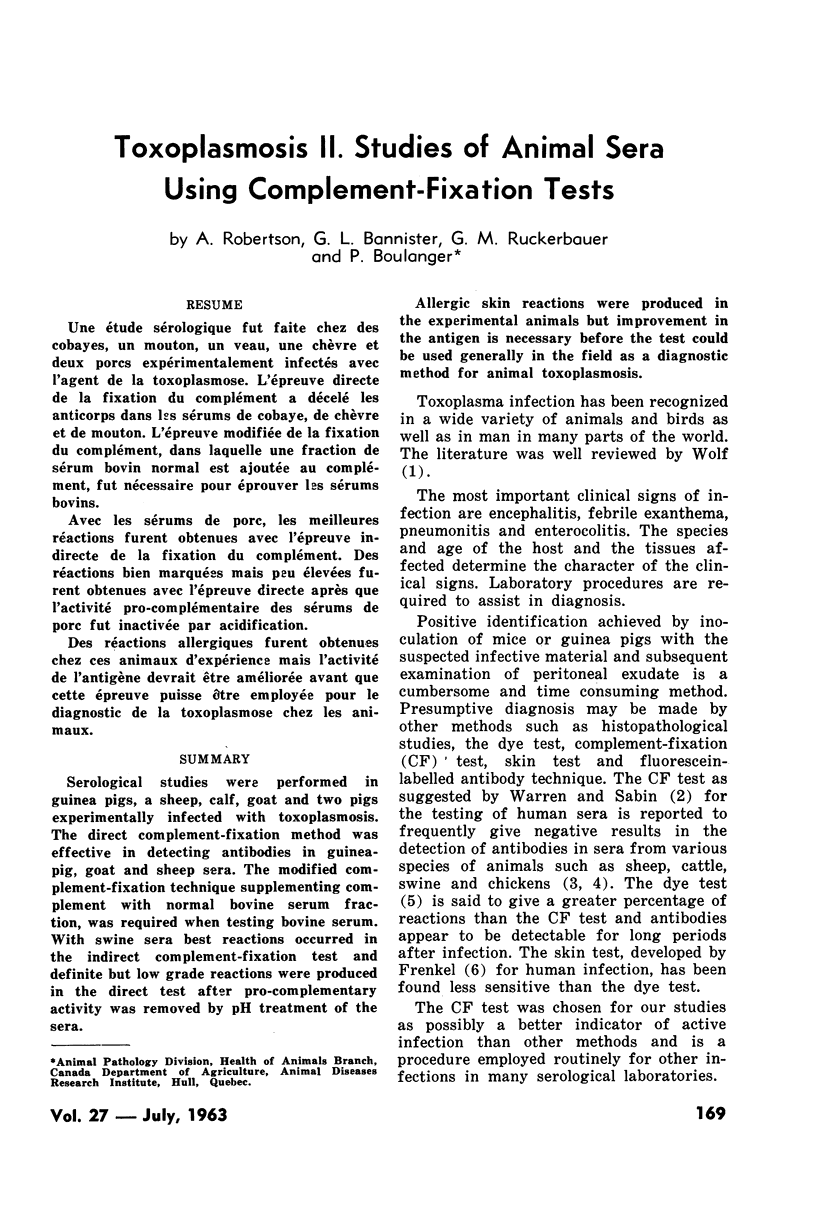
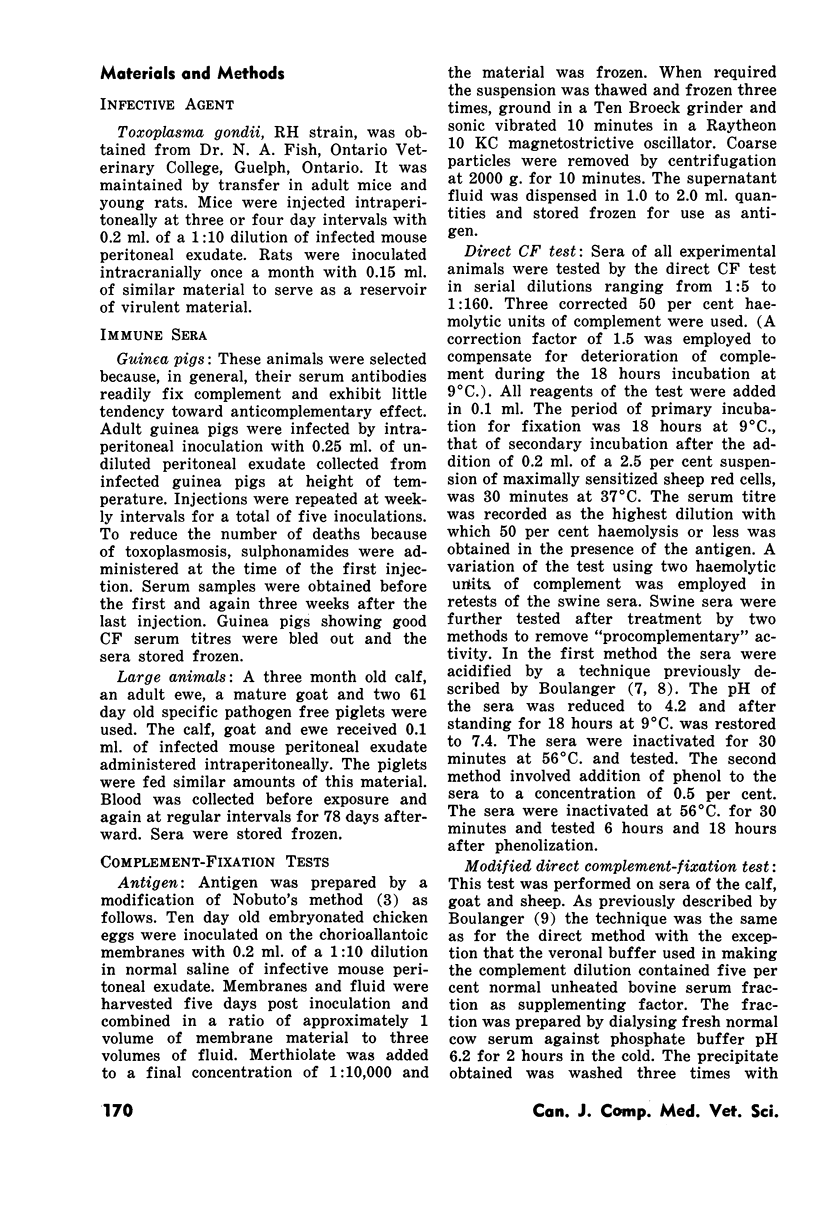

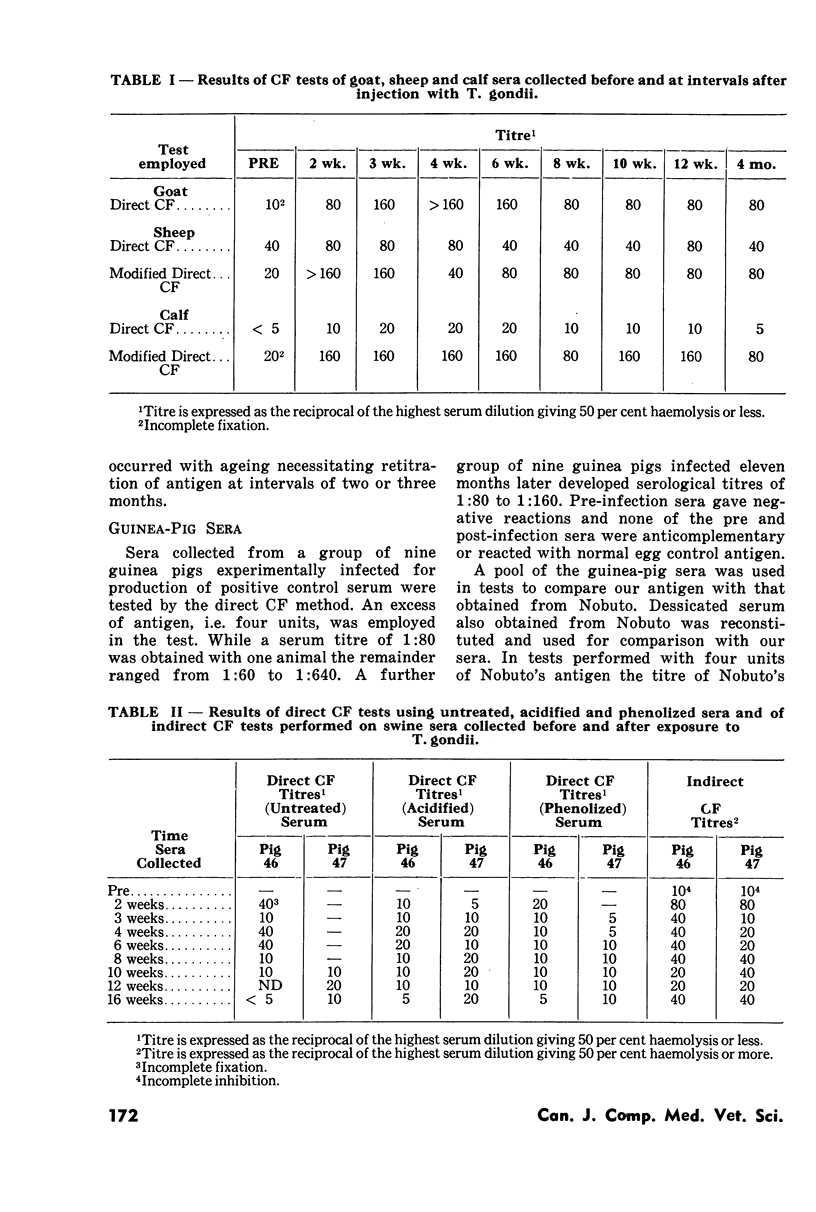
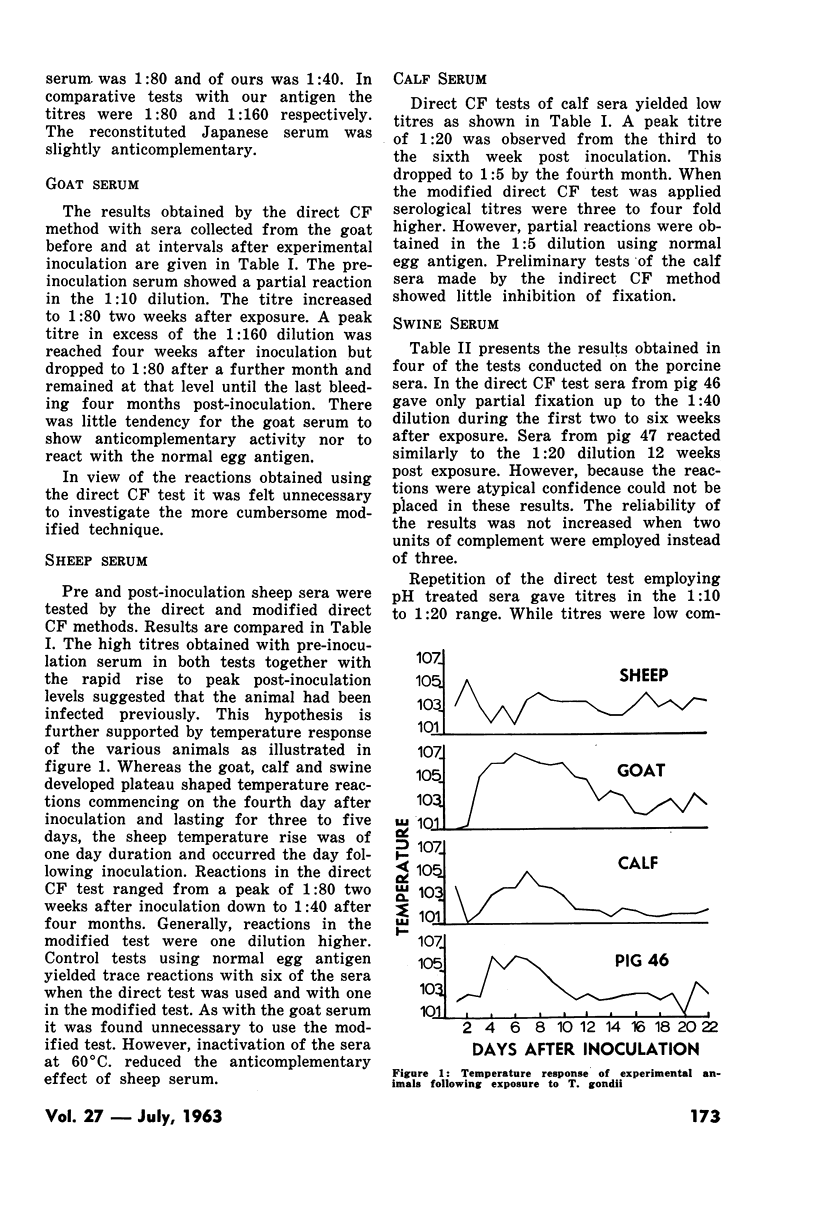
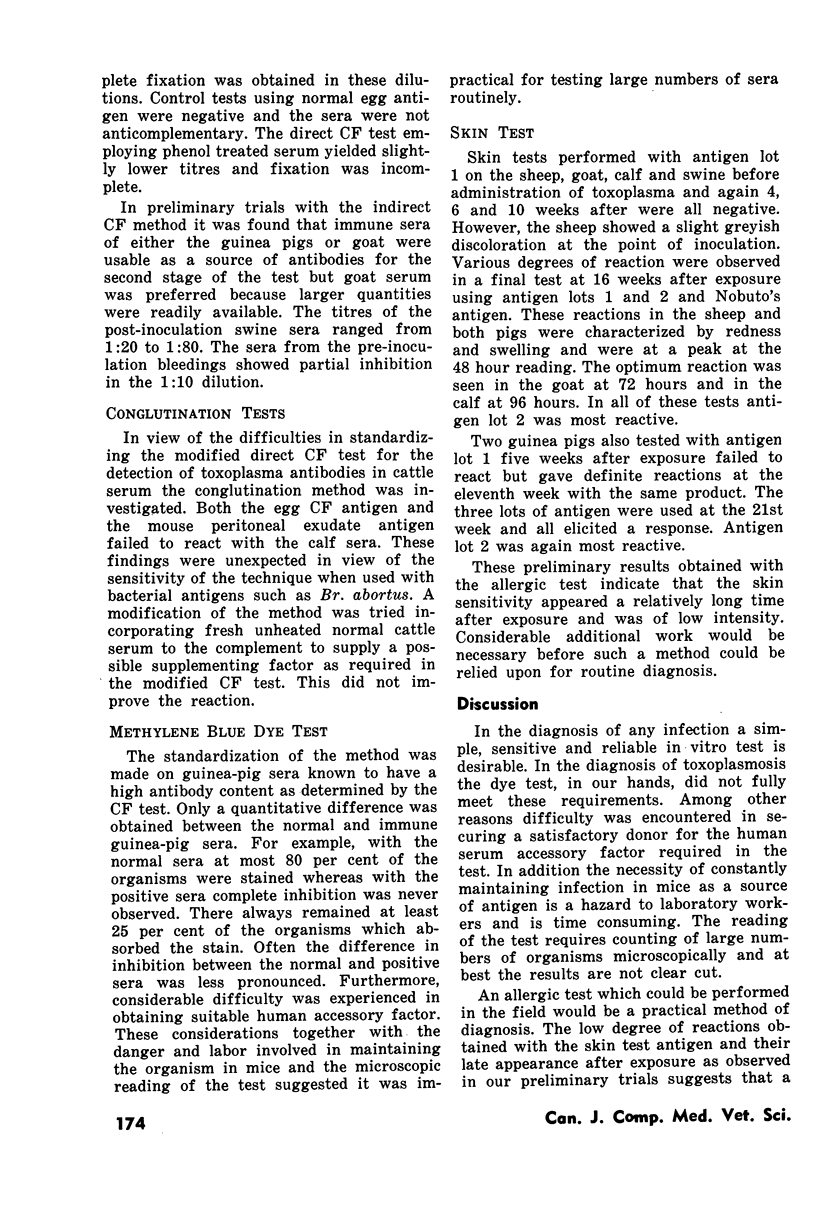
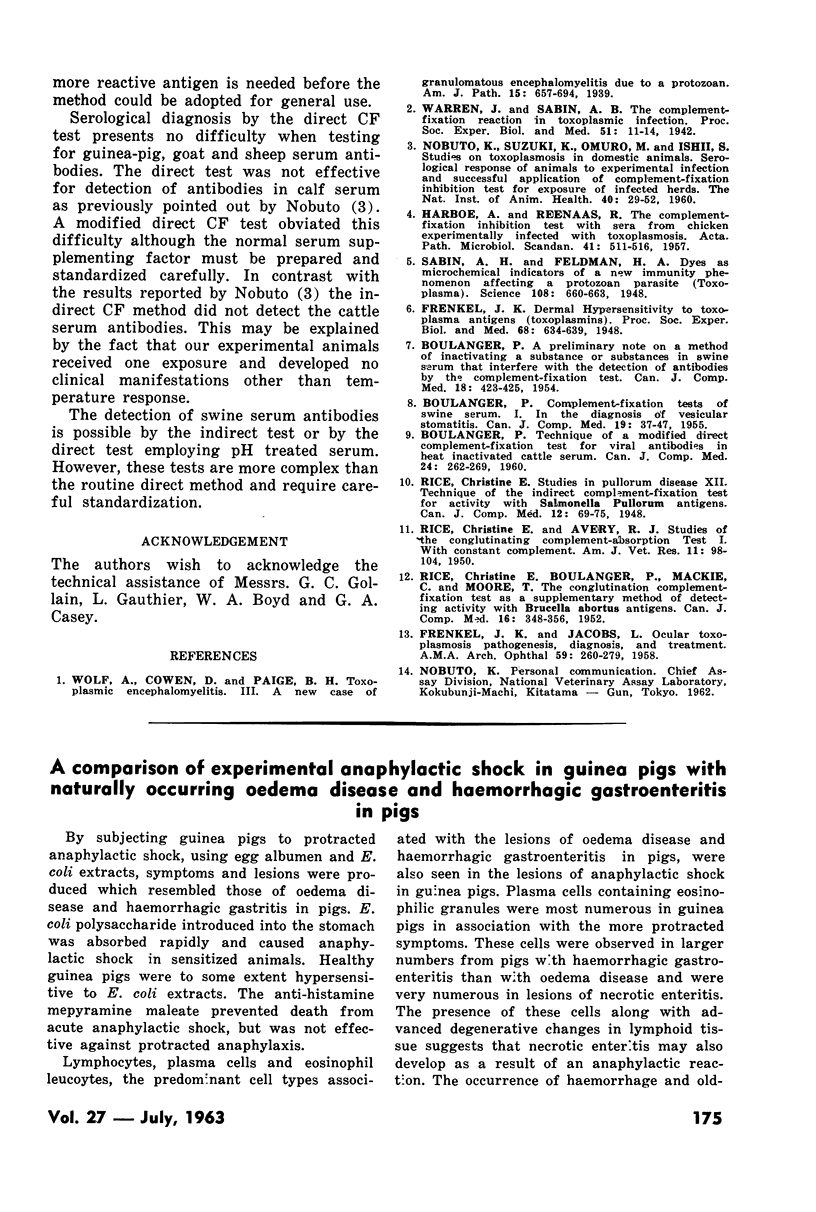
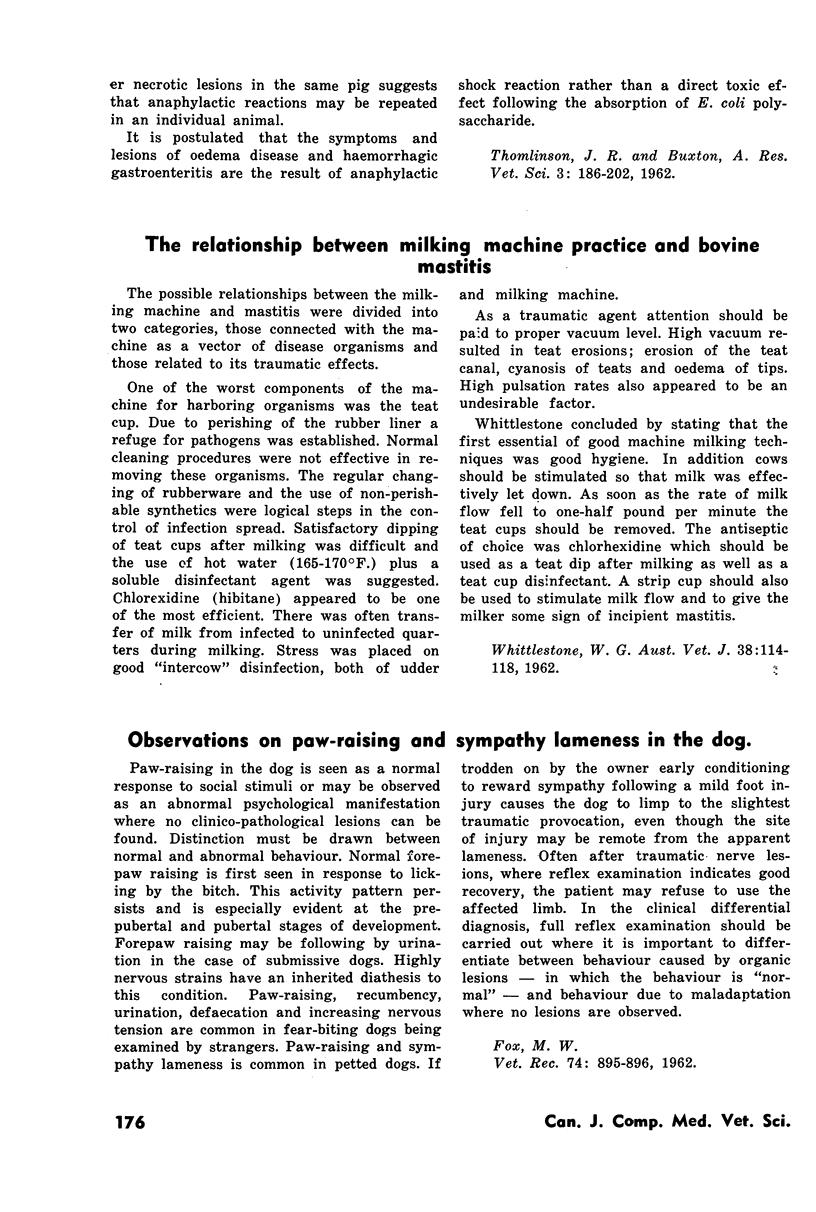
Selected References
These references are in PubMed. This may not be the complete list of references from this article.
- Boulanger P. A Preliminary Note On A Method Of Inactivating A Substance Or Substances In Swine Serum That Interfere With The Detection Of Antibodies By The Complementary-Fixation Test. Can J Comp Med Vet Sci. 1954 Dec;18(12):423–425. [PMC free article] [PubMed] [Google Scholar]
- Boulanger P. Complement-Fixation Tests Of Swine Serum. I. In The Diagnosis Of Vesicular Stomatitis. Can J Comp Med Vet Sci. 1955 Feb;19(2):37–47. [PMC free article] [PubMed] [Google Scholar]
- Boulanger P. Technique of a Modified Direct Complement-Fixation Test for Viral Antibodies in Heat Inactivated Cattle Serum. Can J Comp Med Vet Sci. 1960 Sep;24(9):262–269. [PMC free article] [PubMed] [Google Scholar]
- FRENKEL J. K., JACOBS L. Ocular toxoplasmosis; pathogenesis, diagnosis and treatment. AMA Arch Ophthalmol. 1958 Feb;59(2):260–279. [PubMed] [Google Scholar]
- HARBOE A., REENAAS R. The complement fixation inhibition test with sera from chickens experimentally infected with toxoplasms. Acta Pathol Microbiol Scand. 1957;41(6):511–516. doi: 10.1111/j.1699-0463.1957.tb01717.x. [DOI] [PubMed] [Google Scholar]
- Rice C. E., Boulanger P., Mackie C., Moore T. The Conglutination Complement-Fixation Test as a Supplementary Method of Detecting Activity with Brucella Abortus Antigens. Can J Comp Med Vet Sci. 1952 Oct;16(10):348–356. [PMC free article] [PubMed] [Google Scholar]
- Sabin A. B., Feldman H. A. Dyes as Microchemical Indicators of a New Immunity Phenomenon Affecting a Protozoon Parasite (Toxoplasma). Science. 1948 Dec 10;108(2815):660–663. doi: 10.1126/science.108.2815.660. [DOI] [PubMed] [Google Scholar]
- Wolf A., Cowen D., Paige B. H. Toxoplasmic encephalomyelitis: III. A new case of granulomatous encephalomyelitis due to a protozoon. Am J Pathol. 1939 Nov;15(6):657–694.11. [PMC free article] [PubMed] [Google Scholar]


